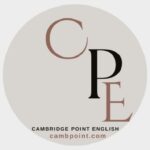Art in Ishaguro’s Novel “An Artist of the Floating World”
In Kazuo Ishiguro’s “An Artist of the Floating World,” the portrayal of art is a central theme that runs throughout the novel. Through the protagonist, Masuji Ono, Ishiguro explores the power and limitations of art, the changing role of the artist in society, and the complexities of artistic expression.
Ono is a traditional Japanese artist skilled in the art form of ukiyo-e, which depicts the “floating world” of pleasure and entertainment. He is celebrated for his talent and craftsmanship, and his art embodies the spirit of pre-war Japan. However, as the narrative unfolds, the context of Ono’s art undergoes a significant shift, reflecting the broader changes occurring in Japanese society.
Art serves as a vehicle for self-expression and communication in the novel. Ono’s art, rooted in tradition and the aesthetics of his time, reflects the values and cultural milieu of pre-war Japan. His paintings capture scenes of beauty, tranquility, and the ephemeral nature of life. Art provides Ono with a means of exploring his own emotions and experiences, offering solace and an escape from the harsh realities of the world.
However, as Japan emerges from the devastation of World War II, the meaning and significance of Ono’s art undergo a profound transformation. The once-celebrated style of ukiyo-e is regarded as outdated and out of touch with the changing times. The post-war era is characterized by Westernization, modernization, and the influence of new artistic movements. Ono’s traditional art becomes associated with a discredited era and a regime that promoted nationalist propaganda.
Through Ono’s experiences, Ishiguro explores the limitations of art in capturing the complexities of the human experience. Ono’s art, rooted in the aesthetics of the floating world, fails to address the pressing social and political issues of the time. It becomes clear that art alone cannot fully capture the nuanced reality of the world or provide a comprehensive commentary on the society in which it is created.
The novel also raises questions about the role of the artist in society. Ono, as an artist, finds himself caught between tradition and progress, struggling to navigate his changing role. The societal changes in post-war Japan, influenced by Western ideals and the occupation by Allied forces, challenge the traditional notions of artistic expression and redefine the artist’s responsibilities.
Through Ono’s interactions with other characters, such as his former student Ichiro Watanabe, the novel highlights the potential for art to be used as a tool of propaganda and manipulation. Ono’s past involvement in creating art that promoted nationalist ideologies forces him to confront the ethical implications of his work and the consequences it had on society. Ishiguro raises questions about the responsibility of the artist and the moral implications of using art as a means of political and social influence.
Moreover, art becomes a catalyst for personal reflection and reconciliation in the novel. As Ono grapples with his past and the consequences of his choices, he returns to painting as a means of self-expression and introspection. His artistic creations become a medium through which he confronts his own guilt, seeks redemption, and attempts to convey a message of reconciliation to society.
In “An Artist of the Floating World,” art serves as a multifaceted symbol, representing tradition, the limitations of artistic expression, and the complexities of the artist’s role in society. Through Ono’s journey, Ishiguro invites readers to contemplate the evolving nature of art, its power to inspire and influence, and its ability to shape individual identity and collective memory. The portrayal of art in the novel underscores the inherent tension between artistic expression and societal expectations, challenging readers to reflect on the responsibility of artists and the impact of their creations on the world around them.
